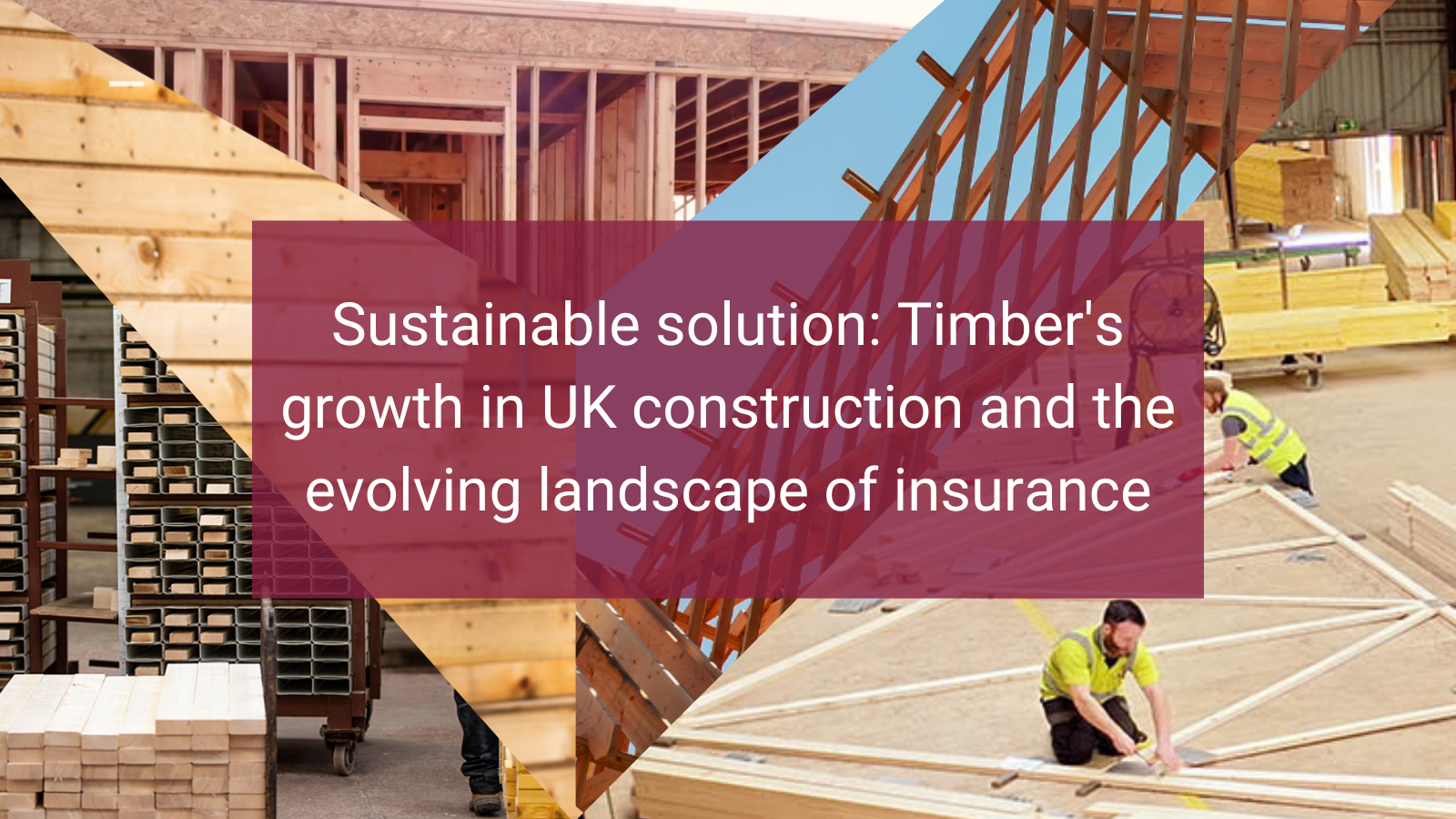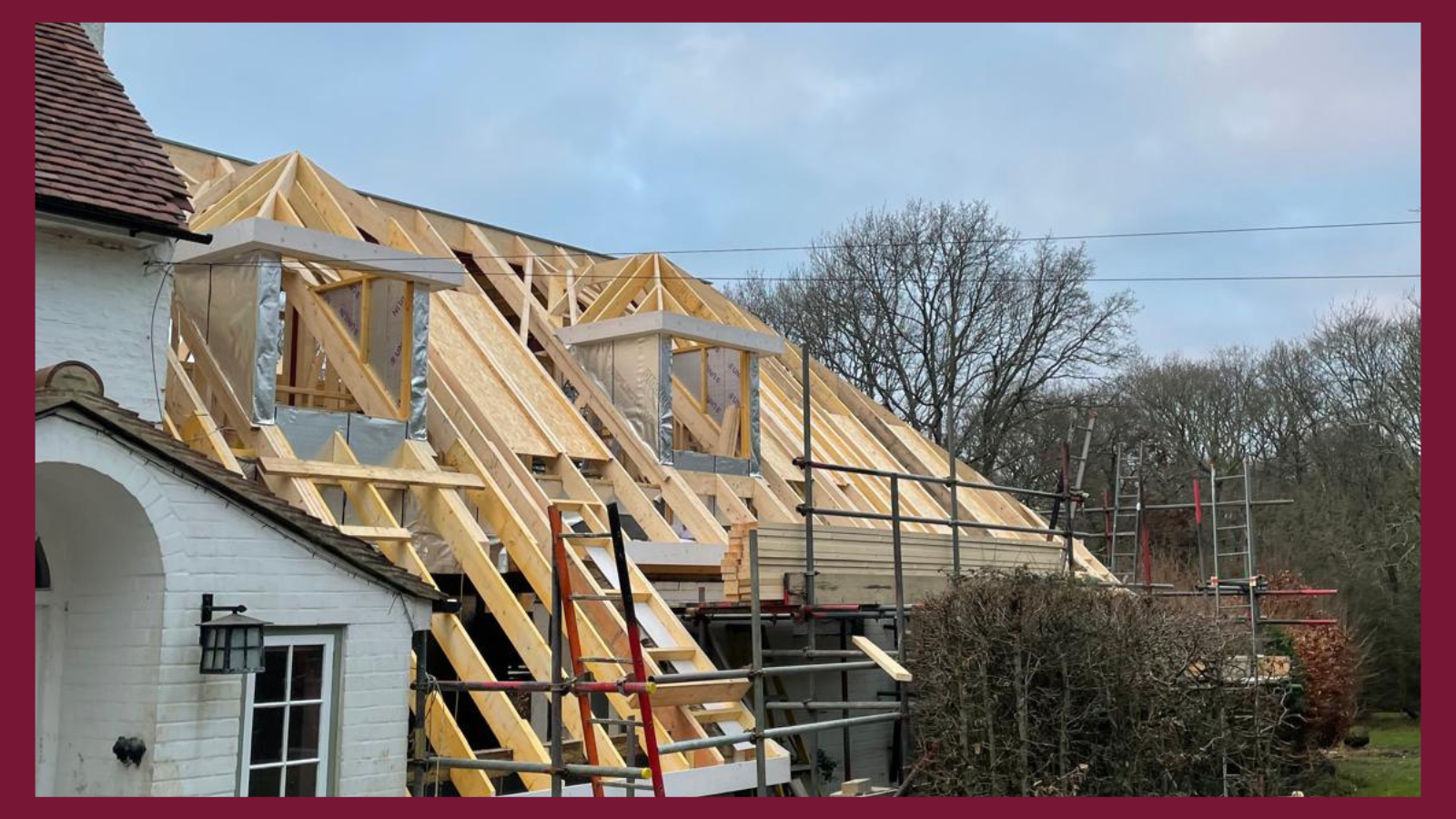Sustainable solution: Timber’s growth in UK construction and the evolving landscape of insurance

Timber construction is gaining momentum in the UK as organisations aim to meet net-zero carbon targets. Timber is valued for its sustainability and renewability, contributing to carbon reduction in construction.
However, educating the insurance industry about the safety of timber is a key focus – uniting the timber industry, architects, engineers and government. As the construction industry embraces sustainable materials and modern methods of construction (MMC) – particularly with the incoming Future Homes Standard – insurers must move with the times.
Insurer engagement: Positive signs, but there is work still to be done
The hugely successful Mass Timber Insurance Playbook, originally launched in May 2023, has recently received backing from the Association of British Insurers (ABI) – a sign of the positive impact of education to improve insurer understanding of timber.
However, a new PWC report, Emerging Trends in Real Estate 2025, takes a much more cautious tone, emphasising that “Many insurers lack a deep understanding of how timber buildings behave in response to risks such as fire, flooding or water leakage.”
Recognising timber’s growing role in sustainable construction, the report highlights that insurance premiums for timber have reduced: “Not so long ago, the insurance premium for a commercial timber building was up to eight times higher than for a traditional structure, but more recently it has come down to two- or threefold.”
But the report also underlines that continued education is key to helping insurers embrace timber’s potential, alongside its vital role as a pioneering material in the future of sustainable construction. “One interviewee sees timber as just the beginning of the necessary innovation in real estate. Over the next 25 years, we need a much wider scale transition in the types of materials that we’re using in buildings. But that’s going to throw up more and more insurance issues.”
Structural timber usage is growing
Structural timber has an extensive history, while also delivering exciting innovation. The whole span of timber products has a role to play, from more recently adopted products such as mass timber to established solutions like timber frame.
Increased adoption is particularly evident in residential construction, where housebuilders and architects are recognising the opportunities. Primarily used in low- to mid-rise residential projects, timber is also finding its place in commercial and high-rise buildings.
For example, Bellway Homes announced this year that it is aiming to increase timber frame use from 12% of its homes in 2024, to around 30% of housing output by 2030. Growing adoption by housebuilders and architects highlights timber’s sustainability and efficiency, offering speed, affordability, and environmental benefits.
Shifting insurers’ appetite to timber – the role of collaboration and government support
Despite how common timber-framed homes are in the UK, and their long history, insurers still class them as being constructed from non-standard building materials. Recognising timber’s sustainability advantage, insurers will need to support the inevitable shift to more sustainable materials like timber and embrace new materials innovation to help mitigate the risk of climate change.
Government support, outlined in the Timber in Construction Roadmap, emphasises the importance of increasing collaboration with insurers, lenders, and warranty providers, fostering a more favourable environment for timber adoption. Collaborative efforts, like the ASBP Mass Timber Playbook, are playing a key role in helping address misconceptions. The recent endorsement of the Playbook from the ABI, the Fire Protection Association (FPA), and RISCAuthority signals that this shift is well under way. Updated guidance from industry bodies, such as RICS, along with performance data and insights from the Structural Timber Association (STA), is also helping shift insurer
The timber frame industry’s commitment to providing an unparalleled offering
Changing the narrative around timber construction is critical to unlocking its full potential. The STA is working hard to reinforce the message that, in contrast to masonry builds, the timber frame industry is committed to providing unparalleled offerings, including:
- Construction, Design & Management Regulation (CDM) Risk Management, embedded by design.
- Moisture Risk Management plans, assured through ISO processes.
- Quality Assurance, integrated in the factory and on-site.
- Site Fire Risk Management, using the unique STA Site Safe approaches.
- Post-occupancy Fire Performance, assured through fire-tested wall types.
These are features not offered by traditional building methods outside of MMC, making it increasingly clear that timber frame construction presents less risk, not more.
Working with Merronbrook
Timber construction is gaining momentum, offering a sustainable, efficient alternative to traditional building methods. While challenges around insurance and regulatory compliance remain, the sector is evolving rapidly through collaboration, innovation, and government support. Timber frame construction, with its proven benefits and growing adoption, is poised to play a pivotal role in shaping the future of UK construction.
Timber frame offers distinct advantages, particularly for residential projects, including improved speed of construction, lower labour costs and demonstrable sustainability benefits. We recommend architects, developers and contractors:
- Take a proactive approach and engage insurers early to align on risk management and design criteria.
- Adopt performance-based design to address life safety and asset protection.
- Leverage insights and collaborate with experts to meet evolving standards.
For more than 50 years, Merronbrook has been at the forefront of timber frame innovation. With rigorous quality assurance processes, we ensure every project meets stringent safety standards while delivering sustainable outcomes. Our design support services help architects and developers optimise projects, ensuring seamless integration of timber frame systems.
By working with trusted experts like Merronbrook and embracing timber’s potential, architects and developers can lead the charge toward a greener, more sustainable built environment


